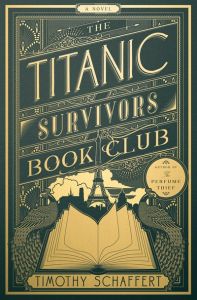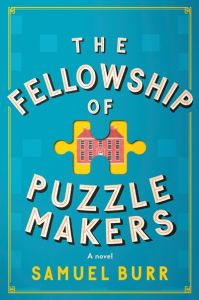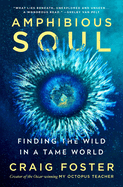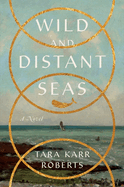

Titanic Survivors Book Club
Timothy Schaffert
Doubleday
For weeks after the sinking of the Titanic, Yorick spots his own name among the list of those lost at sea. As an apprentice librarian for the White Star Line, his job was to curate the ship’s second-class library. But the day the Titanic set sail he was left stranded at the dock.
After the ship’s sinking, Yorick takes this twist of fate as a sign to follow his lifelong dream of owning a bookshop in Paris. Soon after, he receives an invitation to a secret society of survivors where he encounters other ticket holders who didn’t board the ship. Haunted by their good fortune, they decide to form a book society, where they can grapple with their own anxieties through heated discussions of The Awakening or The Picture of Dorian Gray.
Of this ragtag group, Yorick finds himself particularly drawn to the glamorous Zinnia and the mysterious Haze, and a tangled triangle of love and friendship forms among them. Yet with the Great War on the horizon and the unexpected death of one of their own, the surviving book club members are left wondering what fate might have in store.

Fellowship of Puzzlemakers
Samuel Burr
Doubleday
Clayton Stumper might be in his twenties, but he dresses like your grandpa and fusses like your aunt. Abandoned at birth on the steps of the Fellowship of Puzzlemakers, he was raised by a group of eccentric enigmatologists and now finds himself among the last survivors of a fading institution.
When the esteemed crossword compiler and main maternal presence in Clayton’s life, Pippa Allsbrook, passes away, she bestows her final puzzle on him: a promise to reveal the mystery of his parentage and prepare him for life beyond the walls of the commune. So begins Clay’s quest to uncover the secrets surrounding his birth, secrets that will change Clay—and the Fellowship—forever.
The Fellowship of Puzzlemakers is pure joy, a story about love and family and what it means to find your people—no matter what age you are.

Swimming Pretty
Vicki Valosik
Liveright
“If you’re not strong enough to swim fast, you’re probably not strong enough to swim ‘pretty,’” said a young Esther Williams to theater impresario Billy Rose. Since the nineteenth century, tensions between beauty and strength, aesthetics and athleticism have both impeded and propelled the careers of female swimmers—none more so than synchronized swimmers, for whom Williams is often considered godmother.
In this revelatory history, Vicki Valosik traces a century of aquatic performance, from vaudeville to the Olympic arena, and brings to life the colorful cast of characters whose “pretty swimming” not only laid the groundwork for an altogether new sport but forever changed women’s relationships with water. Williams, who became a Hollywood sensation for her splashy “aquamusicals,” was just one in a long, bedazzled line of swimmers who began their careers as athletes but found greater opportunity, and often social acceptance, in the world of show business.
Early starlets like Lurline the Water Queen performed “scientific” swimming, a set of moves previously only practiced by men—including Benjamin Franklin—that focused on form and exhibited mastery in the water. Demonstrating their fancy feats in aquariums and water tanks rolled onto music hall stages, these women stunned Victorian audiences with their physical dexterity and defied society’s rigid expectations of what was proper and possible for their sex.
Far more than bathing beauties, they ushered in sensible swimwear and influenced lifesaving and physical education programs, helping to drop national drowning rates and paving the way for new generations of female athletes. When a Chicago physical educator matched their aquatic movements to music in the 1920s, young girls flocked to take part in “synchronized swimming.” But despite overwhelming love from audiences and the Olympic ambitions of its practitioners, “synchro” was long perceived as little more than entertaining pageantry, and its athletes would face a battle against the current to earn a spot at the highest echelons of sport.
Now, on the fortieth anniversary of synchronized swimming’s elevation to Olympic status, Swimming Pretty honors its incredible history of grit, glamor, and sheer athleticism.

Sharks
John Long
Ballantine
Sharks have been fighting for their lives for 500 million years and are under dire threat today. They are the longest surviving vertebrate on Earth, outlasting multiple mass extinction events that decimated life on the planet. How did they thrive so long? By developing superpower-like abilities that allowed them to ascend to the top of the oceanic food chain.
John Long, who has been on the cutting edge of shark research for decades, weaves a thrilling story of sharks’ unparalleled reign. The Secret History of Sharks showcases the global search to discover sharks’ secret history, led by Long and dozens of other extraordinary scientists. They embark on digs to all seven continents, investigating layers of rock and using cutting edge technology to reveal never-before-found fossils and the clues to sharks’ singular story.
As the tale unfolds, Long introduces an enormous range of astonishing organisms: a thirty-foot-long shark with a deadly saw blade of jagged teeth protruding from its lower jaws, a monster giant clams crusher, and bizarre sharks fossilized while in their mating ritual, and also includes startling new facts about the mighty megalodon, with its sixty-six-foot-long body, massive jaws, and six-inch serrated teeth.
With insights into the threats to sharks today, how sharks contribute to medical advances, and the lessons sharks can teach us for our own survival, The Secret History of Sharks is a riveting story of scientific discovery with ramifications far beyond the ocean.

Wide Wide Sea
Hampton Sides
Doubleday

Amphibious Soul
Craig Foster
HarperOne

Saddest Girl on the Beach
Heather Frese
Blair

Wild and Distant Seas
Tara Karr Roberts
W.W. Norton & Company

Swimming in Paris
Colombe Schneck
Penguin Press
At fifty years old, while taking swimming lessons, I finally realized that my body was not actually as incompetent as I’d thought. My physical gestures had been, until then, small, worried, tense. In swimming I learned to extend them. I saw male bodies swimming beside me, and I swam past them, I was delighted, my breasts got smaller, my uterus stopped working. My body, by showing me who I was, allowed me to become fully myself.

Bad Tourists
Caro Carver
Avid Reader Press

